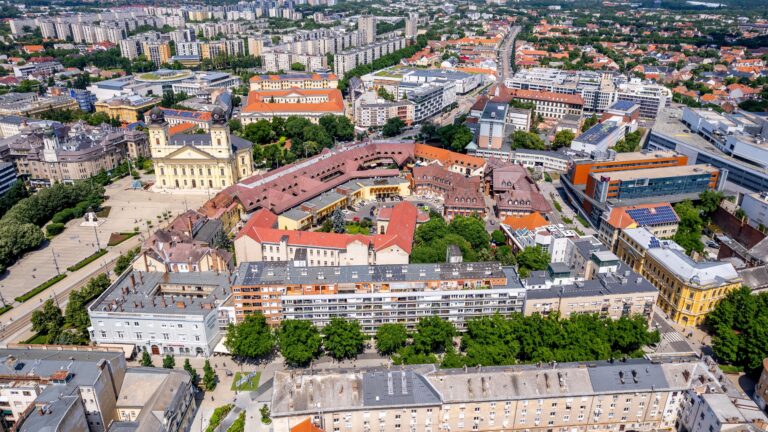‘This year, the government expects economic growth between 2 to 3 per cent, but by 2025, achievable and sustainable growth around 4 per cent is anticipated,’ Minister for National Economy Márton Nagy announced at a press conference held in Budapest on Monday, where he presented the new competitiveness strategy for 2024–2030 adopted by the government.
Márton Nagy elaborated: ‘Due to the temporary weakness in export markets, growth this year will not reach 4 per cent, but in the long term, this will no longer be the case.’ The government does not view the economy from the top down and does not use indicator systems; the competitiveness strategy is built on the nearly 1,300 proposals submitted by professional organizations, he stated. The minister emphasized: ‘There is no need for an economic turnaround, only for fine-tuning.’
The government’s unchanged goal is for Hungary to reach 90 per cent of EU development by 2030.
To achieve this, the employment rate must rise to 85 per cent, and the investment rate to 30 per cent of GDP, with corporate investment reaching 20 per cent, he explained.
As a goal, the minister mentioned the reindustrialization of the economy, where product exports will reach 100 per cent of GDP, and the share of manufacturing in GDP will be 30 per cent. He added:
‘By 2030, Hungary needs to be among the top twenty most competitive countries in the world.’
He pointed out that in addition to the quantity of investments, the qualitative improvement of productivity is also essential for increasing convergence and competitiveness. Alongside quality, however, economies of scale are also emphasized. With adequate economies of scale, companies can afford wages and the additional conditions necessary for growth, he pointed out.
Among the most important principles, Nagy mentioned, among other things, ensuring high-quality labour, incentivizing mobility and training support, continuous and uniform increases in real wages, reducing income disparities, stimulating the efficiency and competitiveness of companies as well as supported credit and capital programmes. The minister added that a highlighted goal of the competitiveness strategy is the development of domestic suppliers, support for research and development and innovation, and strengthening Hungarian-owned industrial companies, fostering ‘Hungarian champions.’ A shift from a macro view to a micro- and meso-level approach is needed, he articulated. He emphasized that
to enhance competitiveness, two particularly important areas come to the fore: electric vehicles and artificial intelligence.
State Secretary for Industrial Policy and Technology Gergely Fábián stated at the press conference that the competitiveness strategy focuses on six priority sectors.
Regarding the automotive industry, he explained that with the transformation of the industry, new sectors are emerging, in which Hungary aims to become a market leader. To achieve this, they strengthen the competitiveness of domestic suppliers and develop the electromobility ecosystem, among other measures. In the food industry, they create supply security resistant to geopolitical challenges with the protection of domestic companies and Hungarian-made foods, strengthen technology and digitization, and encourage exports, he indicated. Speaking about the health industry, the state secretary emphasized that by 2030, Hungary will become self-sufficient in essential healthcare equipment and they will increase the proportion of Hungarian products in domestic healthcare from 15 to 30 per cent. Regarding the chemical, steel, and plastic industries, among other things, the secretary said that there is significant potential for adapting to new technological trends, while the main challenge lies in the green transition of the sector. The highlighted sectors of the competitiveness strategy also include information and communication technology and the creative industry, Fábián outlined.
Related articles:
Sources: Hungarian Conservative/MTI








